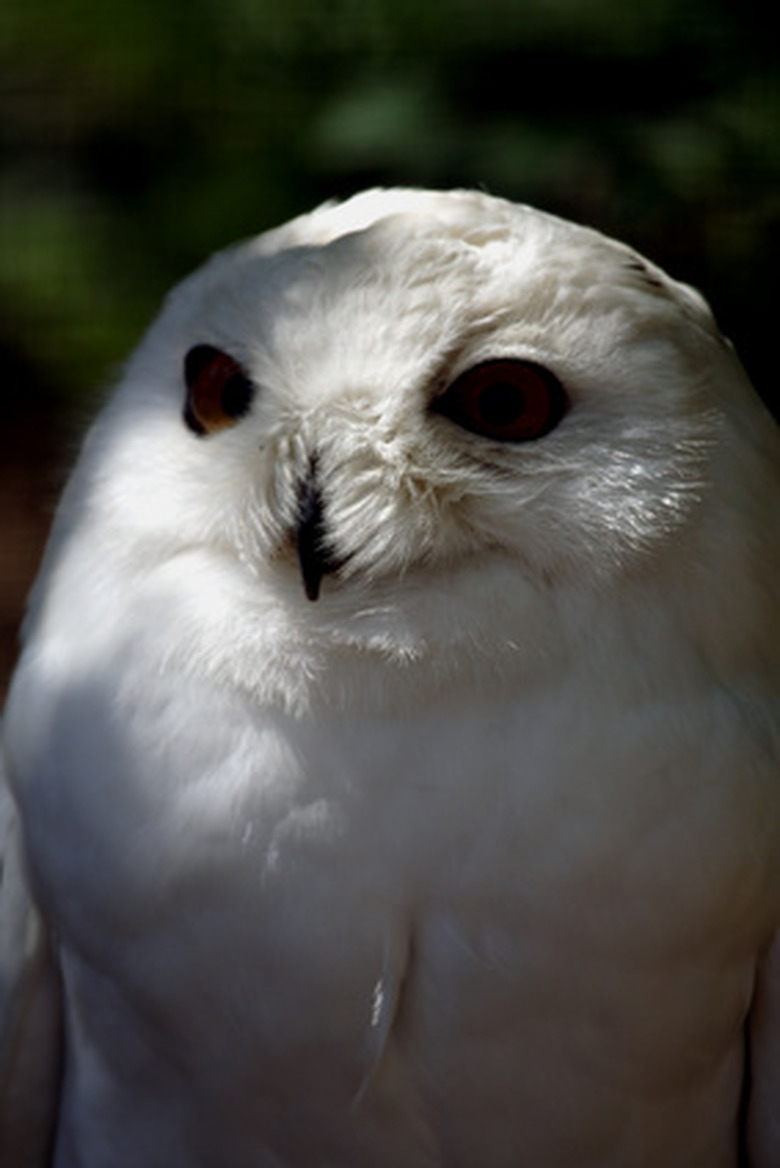Endangered Animals: The Snowy Owl
The snowy owl (Nyctea scandiaca) was first classified by Carolus Linnaes, who was a Swedish naturalist, in 1758. Snowy owls are different from other species of owl, as they are diurnal, which means they are active during the day. Most other species of owls are nocturnal. This beautiful bird can almost be described as catlike as it stares with its large yellow eyes while crouching low on the ground.
Description
Description
There is no easier bird to identify than the snowy owl. It is a strikingly white bird, growing to 25 1/2 inches in length, with an impressive wingspan of up to 63 inches. The adult female is larger than the adult male. Though the male is almost completely white, except for a very few dark spots, the female tends to have dark spots on the top of her head going down her back and her shoulders. Younger owls are much darker in color but lose these markings as they mature into fully grown adults.
Communication
Communication
The snowy owl communicates in a variety of ways. Males "hoot" much more often than females and seem to use this sound when they feel threatened. Both the male and the female have a variety of other calls, including the alarm sound "krek, krek, krek." Its song is a deep "gawh" repeated about every five seconds and can be heard up to five miles away.
Feeding habits
Feeding habits
Snowy owls are carnivorous and their main diet is lemmings. It is estimated that a snowy owl will eat approximately 1,600 lemmings a year. They also eat mice and other small mammals, birds as well as fish. Most of a snowy owl's hunting is known as a sit-and-wait style. Prey is caught on the ground, in the air or from the surface of the water. They swallow their prey whole, and the flesh is digested by the bird's stomach juices. The bones, feathers and fur are made into small oval pellets that are regurgitated by the bird 18 to 24 hours later.
Predation
Predation
The main predator of the snowy owl is humans, as they are hunted for their eggs, to be used as trophies and to protect game animals. Other predators include foxes and wolves, as well as eagles, who will attack younger birds in the nest.
Conservation
Conservation
There are believed to be approximately 280,000 snowy owls in the world. A majority of these can be found in Alaska, Canada and Greenland, as well as Russia and Scandinavia, where they breed. In winter they move to the United States, the British Isles and Northern Europe. The snowy owl is not endangered or threatened in the U.S., but is protected under the U.S. Migratory Bird Act.
References
- "Bird Guide;" Killian Mullarney, Lars Svensson, Dan Zetterstrom, Peter J Grant; 2001
- "Great Birds of Britain and Europe;" Jonathan Elphick and David Tipling; 2008
- "The Pocket Guide to the Birds of Prey of Britain and Europe;" Peter Hayman and Rob Hume; 2006
Cite This Article
MLA
Willis, Katy. "Endangered Animals: The Snowy Owl" sciencing.com, https://www.sciencing.com/endangered-animals-snowy-owl-7231113/. 22 November 2019.
APA
Willis, Katy. (2019, November 22). Endangered Animals: The Snowy Owl. sciencing.com. Retrieved from https://www.sciencing.com/endangered-animals-snowy-owl-7231113/
Chicago
Willis, Katy. Endangered Animals: The Snowy Owl last modified March 24, 2022. https://www.sciencing.com/endangered-animals-snowy-owl-7231113/
